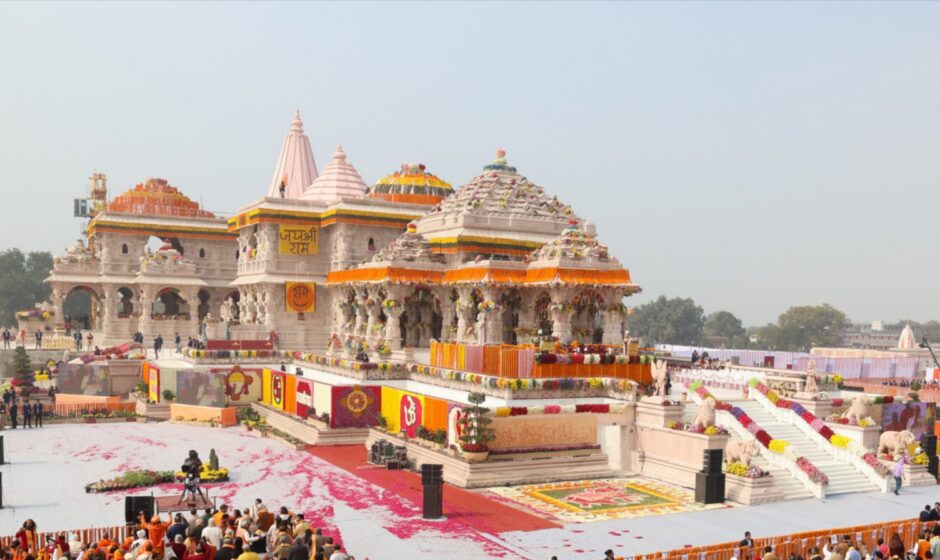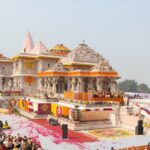Ram Janmabhoomi: The Spiritual Heart of Ayodhya
Ram Janmabhoomi, the birthplace of Lord Ram, holds a timeless significance in Hindu mythology, history, and spirituality. Located in Ayodhya, a city revered as the “City of Lord Ram,” this sacred site is a cornerstone of Indian culture and faith. Today, it is not only a pilgrimage destination but also a focal point of ayodhya tourism , drawing devotees and travelers from across the globe.
With the construction of the grand Ram Temple underway, the aura of Ram Janmabhoomi has been further elevated, offering visitors a spiritual and cultural experience like no other. If you’re planning to explore this divine destination, an ayodhya tour package crafted by a trusted travel agent in ayodhya can ensure a seamless and fulfilling journey.
Ram Janmabhoomi, located in the ancient city of Ayodhya in Uttar Pradesh, India, is revered as the birthplace of Lord Ram, the seventh avatar of Lord Vishnu in Hindu tradition. This sacred site holds immense religious, cultural, and historical significance for millions of Hindus worldwide. Lord Ram, considered the embodiment of dharma (righteousness) and virtue, is the central figure of the epic Ramayana, which narrates his life story, values, and heroic deeds.
According to Hindu beliefs, Ayodhya was the capital of the Ikshvaku dynasty, to which Lord Ram belonged, and it was a thriving city of grandeur and prosperity. Ram Janmabhoomi is regarded as the spot where Lord Ram was born, symbolizing divine grace, justice, and moral governance. Pilgrims and devotees have visited this site for centuries to pay homage to Lord Ram and seek blessings for peace, prosperity, and spiritual growth.
The Ram Janmabhoomi site has also been a focal point of historical and political discourse. In the medieval era, a mosque known as the Babri Masjid was constructed on the site, which many Hindus believe to have replaced a pre-existing Ram temple. This led to a prolonged dispute over the ownership and religious significance of the land, which persisted for centuries.
The issue gained national prominence in the late 20th century, sparking debates, legal battles, and political movements. The dispute culminated in a significant event on December 6, 1992, when the Babri Masjid was demolished by kar sevaks (volunteers), leading to widespread communal unrest across the country.
After decades of legal proceedings, the Supreme Court of India delivered a landmark verdict on November 9, 2019. The court awarded the disputed land to the Hindu community for the construction of a Ram temple, while allocating an alternative site in Ayodhya for the construction of a mosque. This verdict was seen as a historic step toward resolving a centuries-old conflict.
Following the verdict, the construction of the grand Ram Mandir began under the guidance of the Shri Ram Janmabhoomi Teerth Kshetra Trust. The temple is being built with intricate craftsmanship, blending traditional and modern architectural techniques. The structure is designed to reflect the grandeur and divinity associated with Lord Ram and is expected to become a major spiritual and cultural landmark. The Ram Janmabhoomi not only stands as a symbol of faith and devotion but also represents India’s rich cultural heritage and spiritual unity. It attracts pilgrims and tourists from across the world, offering them a chance to connect with the profound legacy of Lord Ram and the teachings of the Ramayana.
Ram Janmabhoomi, located in the holy city of Ayodhya in Uttar Pradesh, is one of the most revered pilgrimage sites for Hindus. It is believed to be the exact spot where Lord Ram, the seventh incarnation of Lord Vishnu, was born. Mentioned prominently in the ancient epic Ramayana, Ram Janmabhoomi holds immense spiritual and cultural significance as the starting point of Lord Ram’s divine journey to establish righteousness (dharma). The site has been at the center of devotion and faith for centuries. Historical records and scriptures describe Ayodhya as an ancient and sacred city, referred to as the capital of the Kosala Kingdom ruled by King Dashrath, Lord Ram’s father. Over time, the site of Ram Janmabhoomi became a focal point for Hindu worship.
The construction of the magnificent Ram Mandir at this sacred spot is a symbol of faith and unity among Hindus worldwide. The temple, designed with intricate carvings and grand architecture, is envisioned as a timeless monument honoring Lord Ram’s legacy. Ram Janmabhoomi is not just a religious site; it is a cultural and spiritual landmark that represents the enduring values of devotion, truth, and dharma. Pilgrims visiting the site experience a profound connection to the divine and a sense of spiritual fulfillment.


